Art & Exhibitions
‘Risks Come With the Concept’: Documenta 15’s Curators Reflect on a Controversial, History-Making Show
Ruangrupa reflected on the turbulent show as it comes to a close.
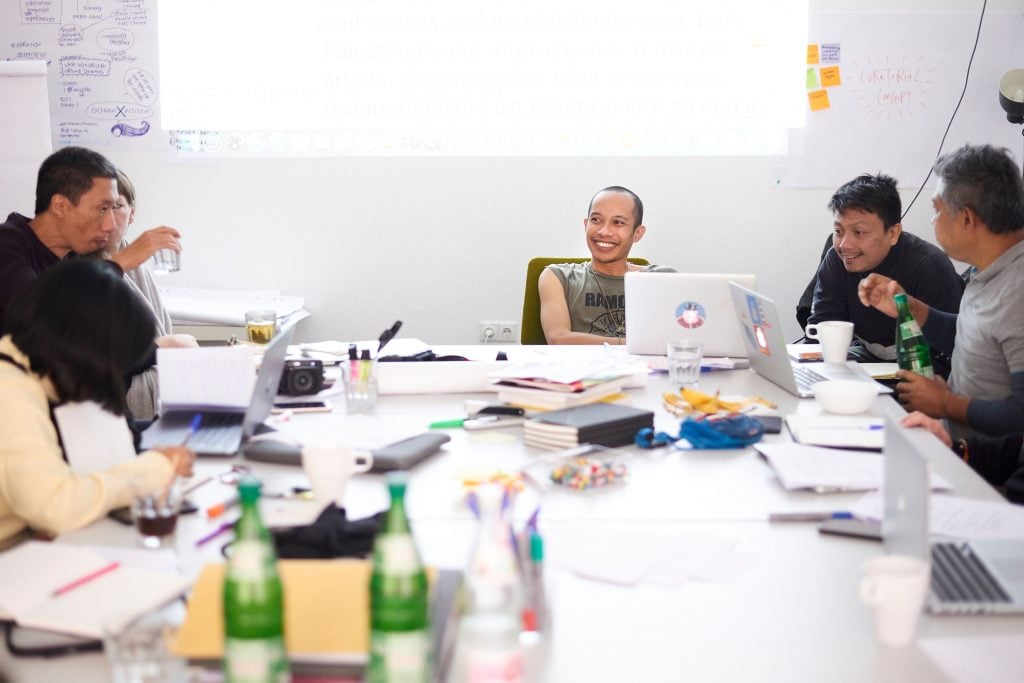
Ruangrupa reflected on the turbulent show as it comes to a close.

Kate Brown

How long is 100 days?
If you are the organizers, artists, and media representatives involved with Documenta, an exhibition in Kassel, Germany, that is known as the “100-day museum,” it can feel long.
There are the years of preamble, planning, anticipation, and research; then, there was the pandemic.
But when the Indonesian collective ruangrupa finally opened their exhibition in June, 100 days suddenly seemed rather short. The show’s organizing principle was the word lumbung, which means a communal rice-barn in Indonesian. In that spirit, the show empowered each participant to recruit their own partners and collaborators—resulting in a staggering 1,500 contributors.
There were vegetable gardens to plant, pieces of furniture to make, kitchens and schools to operate, and karaoke to sing. A stream of events washed over the city and around the world as the collective exhibition of collectives rippled outward. Documenta was in a hectic, but nevertheless dynamic, state of becoming. A hundred days can be short when the days and nights are long and full, in a show that deconstructed a valiantly German institution unlike any had before it.
Then there were the scandals. Some of the curators and artists came under suspicion for their views on the pro-Palestinian movement, BDS. A space was vandalized. Conversation seemed impossible on either side. In June, the public noticed antisemitic figures in a work by the Indonesian collective Taring Padi. After closer review, the mural was removed. Journalists and onlookers critiqued the curators and their concept, as they had been for months, for opening the door to harmful imagery and oversights. Ruangrupa and the artists apologized, but the damage was done, and questions around it remained at the forefront of the conversation. An artist and an external adviser withdrew; an official lost their job. There was valid anger incited by missed communication and miscommunication.
Artnet News spoke with ruangrupa—a collective with a fluctuating cast of around 10 members—about the show that will likely change the course of Documenta. As the hundred days comes to a close on Sunday, September 25, one of the the group’s members reflected on the experience from Kassel. In keeping with ruangrupa’s ethos, they declined to be named and spoke for all of the members collectively.
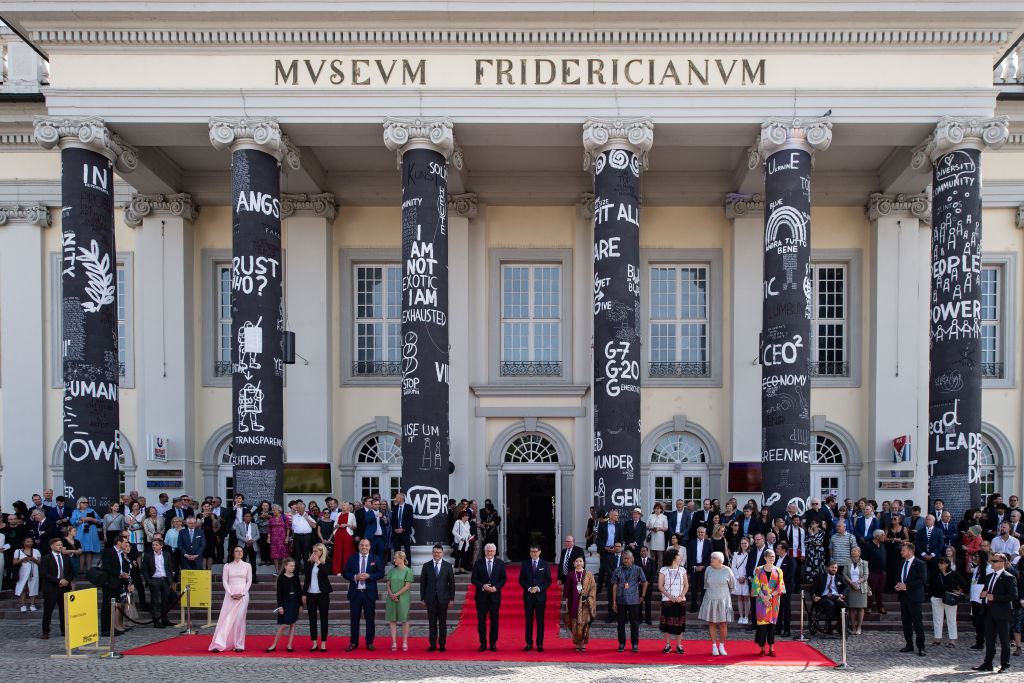
German President Frank-Walter Steinmeier stands next to Arif Havas Oegroseno, ambassador of the Republic of Indonesia, in front of the Museum Fridericianum at the opening of Documenta 15. (Photo by Swen Pförtner/picture alliance via Getty Images)
How is the collective feeling as this show comes to a close?
There is a bit of sadness because the process has ended. Some of us are sad to leave Kassel and move on to other things. We are having farewell drinks and dinners now. A couple of days ago, one of the Lumbung program team members made a poster of the events during the course of the show—there are more than 1,200 lines of events listed. This habit is becoming contagious and so the goal is to keep collaboration going in various forms—we have already been thinking for a while about the next iteration of Lumbung. But we also need rest.
Understandable—you have been working in this collective way for many years, but Documenta 15 was certainly the most ambitious iteration of it. There must have been a sharp learning curve. Is there something that you wish you had done differently in terms of the show’s structure, looking back from this point in time?
Scale. We should have known better and we should have listened to ourselves more. Back when we were only the 14 Lumbung members, there was some fear that we would not be able to fill the space with works. We should have been much more steadfast back then. We knew it was going to be enough work, and we knew how this process would end as we kept expanding invitations. What happened was that it became too big for a lot of people, including ourselves: 1,500 names with 32 venues and 1,200 and counting events. It’s not that we want to cover and know everything, but it does seem the intimacy of experience was affected. We didn’t want people to have to run around to catch everything. That habit to just spend time in one or two venues and get to know a few projects, that is not a biennial habit. But we should have listened to ourselves.
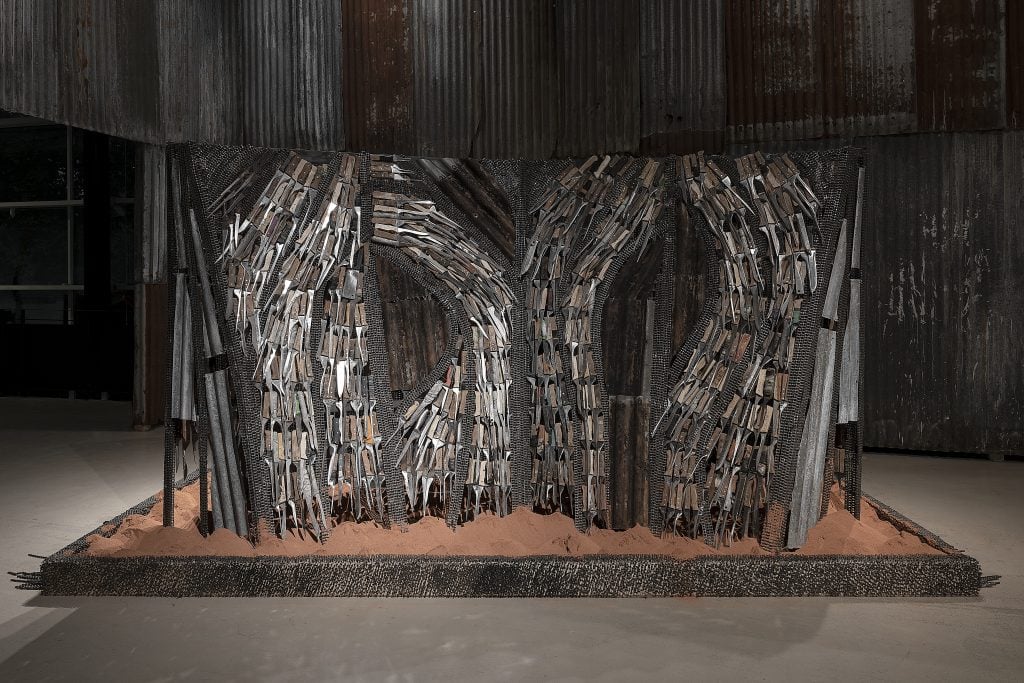
Documenta 15: Wajukuu Art Project, Ngugi Waweru, Kahiu kogi gatemaga mwene, 2022, Installation view, documenta Halle. Photo: Nicolas Wefers
I really liked that about Documenta 15. There was no possibility to have a complete view—that was an interesting and healthy challenge for art viewers. However, on the other hand, as curators you cannot have a view into everything that is going on.
We knew that it was going to be like this. We discussed it a lot. We also had an uneasiness with calling ourselves curators and we avoided the term when we could. Of course, 1,500 artists was surprising—1,200 events were surprising. But the [relinquishing] of control was intentional. We were not trying to have singular authorship, and that meant cascades of invitations, it meant openness. It meant spontaneity. It is hard to deal with it in terms of production though, because the people we are inviting expect openness and improvisation from production teams. To translate this way of working into an exhibition-making logic—this is the clash of systems. We learned a lot from this incompatibility.
Do you have a sense that Documenta und Museum Fridericianum gGmbH, the parent company and organizers of the show, learned from you? Were they able to be flexible enough?
Everyone learned a lot. The result of these lessons, we cannot predict yet.
The supervisory board consists mainly of politicians. They are the executives who have the habit of using external finding committees to find the next directors for Documenta. They selected us, and then we all had to learn how to work together.
Our question now is what will happen after this edition: [Documenta’s board and finding committee] could go to both extremes, and either go very traditional in their next selection or surprise everyone, which is what they did after Documenta 14, and push the envelope even further.
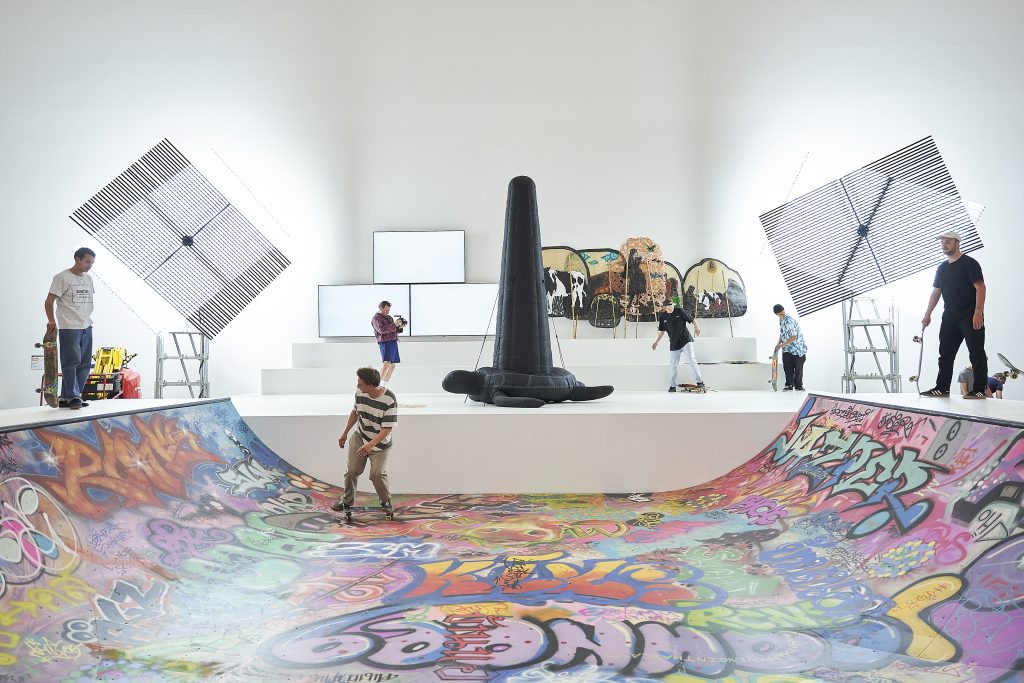
Documenta 15: Baan Noorg, The Rituals of Things, 2022, Installation view, Fridericianum. Photo: Nicolas Wefers
Circling back to the issue of scale, I heard there was a lot of pressure on production teams and other workers in the show because of the exhibition’s size. How were you able to mitigate this?
It is something that we learned by doing. We understand the pressure they were under. And that is why the scale was our biggest point of learning. It became too big. So, we talked to the mediators, the guards. But within the structure, our power and knowledge were limited. Yet these problems are not new and this happens everywhere—that people in the art fields are underpaid, overworked, not being cared for enough, not feeling safe enough. But we were not able to deal with it structurally either. We met the mediators five weeks before the show opened to try to be better at this, but there were several things that could not be solved quickly enough. We should have asked to see the books about what everyone was being paid and demanded more transparency. Now, a group of the mediators are going to be making a publication with [Documenta 15’s in-house] Lumbung Press that will be a reflection on this.
I wonder if you think that the scale of the show caused oversights that you may have otherwise been able to avoid—to be more specific, checking artwork for possible problems.
For us, risks like this come with the concept. We practice trust fully, because we work with those who we trust. The risk comes with the trust—it is two sides of the same coin. The thing that we can do better in the future is to actually push conversations when problems happen, doing it with the politicians, with the management, so that we are a united front. Not being taken by shock, which is what happened to us with Taring Padi’s work People’s Justice.
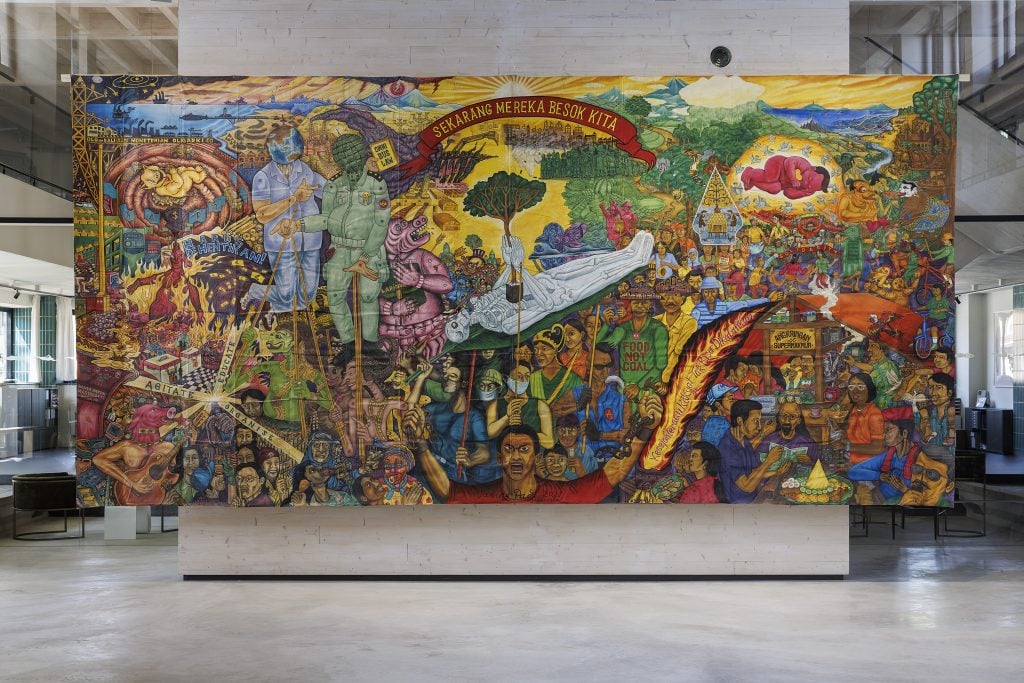
Documenta 15: Taring Padi, Sekarang Mereka, Besok Kita (Today they’ve come for them, tomorrow they come for us), 2021, Installation view, Kassel. Photo: Frank Sperling
Do you regret canceling the “We Need to Talk” series that was planned for April? [After facing accusations of anti-semitism and bias around chosen panelists, Documenta 15 decided to cancel a talk series that sought to address anti-Israel, antisemitic, anti-Palestinian and anti-Muslim issues.]
If it would have happened, it would have been very different. I think there would have been a shift. But now we can only imagine and we cannot turn back time. I do not think we could have done things differently even then though, given the people we had invited to the panel, and the intentions behind the series. But it is regrettable that it didn’t happen.
I interviewed Taring Padi. They said that they did not appropriately consider progressive Jewish populations’ perspectives as being victims of oppression. I wanted to ask ruangrupa about that. I know that Documenta 15 was in many ways about platforming artists at the margin, about creating productive and safe spaces. Was the perspective of Jewish positions considered, and was the safety of viewers, including Jewish ones, appropriately considered?
There are a lot of lessons, like the one Taring Padi mentioned, that all of us can and must keep on learning.
There are those who are Jewish in various groups of artists at Documenta who did not want to come out because of this. And, of course, Jewish identity is not a monolith in itself. The way we look at things is not first and foremost about biographies, but rather about how certain practices can sustain themselves. In the case of [Documenta 15 participants] Party Office [who pulled out of an event after members were harassed in Kassel], for example, they do talk about identity and their struggles with that as a part of their work. But, for us, we did not seek that out as content—because we did not start with a list of issues to represent.
For us, it was about the way of working and the way of survival and the lessons we want to learn from [participants]. Whether that strategy was enough, that is something that we are now reflecting on. It is going to have to be different for us going forward.
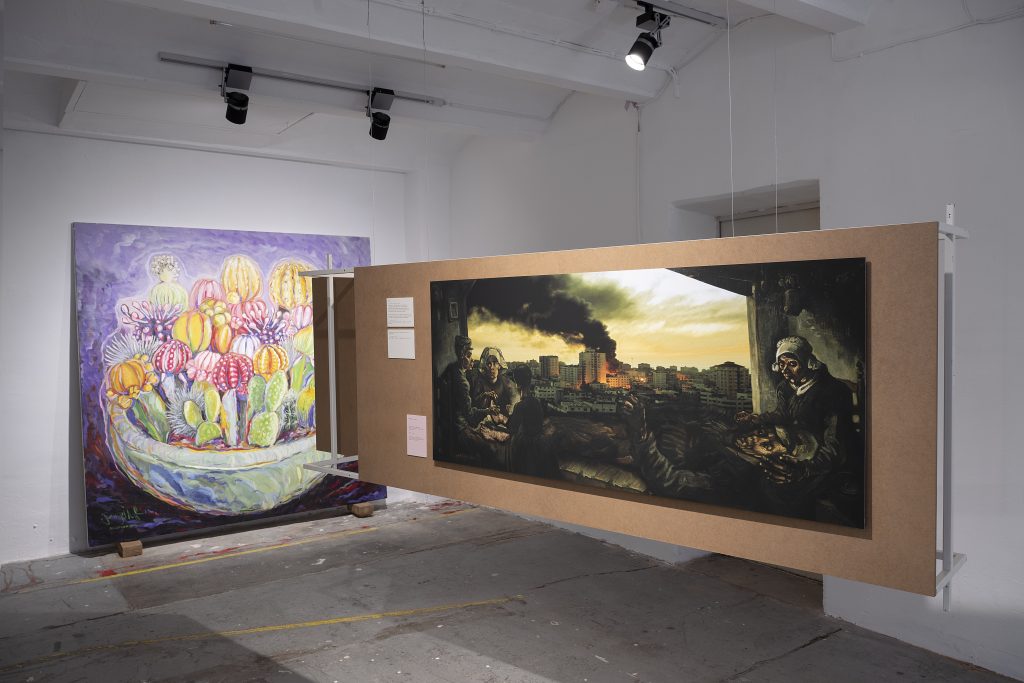
Documenta 15: The Question of Funding hosts Eltiqa, 2022, Installation view, WH22, Kassel. Photo: Nils Klinger
One thing for sure is that structurally, we have to prepare better for conflicts that might arise. We have nothing against Jewish voices and all the different kinds of struggles. We did not try to suppress or overlook anything. But we do not talk about all the issues in the world. This is not a world exhibition like the Venice Biennale where we try to represent everyone—that is not our logic. We did not touch on Russia and Ukraine directly, for example. The process made it this way. But then again, how to deal with localities and problems that can arise locally, this can be done better.
If we flipped it, this could happen in Indonesia in different ways, for example in regards to the local issues around communism or LGBTQIA+ issues. These are not issues that our society is comfortable talking about and looking at. We know that we need to treat certain things differently in other countries.
The illusion of the freedom of art is being brought into question. Let’s call a spade a spade: If it is not fully free, then do not call it free. Do not give that illusion.
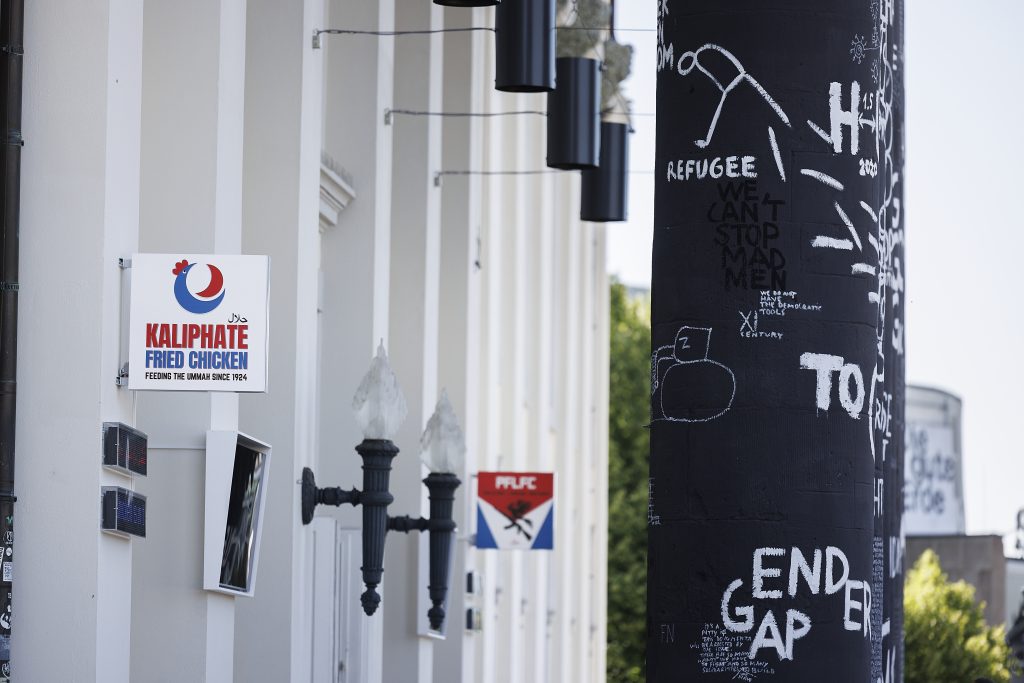
Documenta 15: Hamja Ahsan, documenta Fried Chicken, 2022, Installation view, Fridericianum, Kassel. Photo: Frank Sperling
One can imagine that when it comes to artistic freedom, things can go too far.
Conceptually, artistic freedom is great. The limit is rather how you deal with others. If we want to talk about the freedom of art in places where we are coming from in the Lumbung community, we fight for it, but we know it is never going to be there. So for us, it is rather a utopian ideal. If we are going to go for it, we need to think about the structures that can make it happen.
There are many illusions—the illusions of freedom and the closeness to politicians. These factors canceled each other out. Something like Documenta can be seen as a state project. Had we seen it like this from the get-go, things would be different. That understanding came late for us. We’ve done other biennials where it is very clear that it is a state project, like the Singapore Biennial or the Gwangju Biennale.
You did not think of Documenta as a state project?
Not the way it is reproduced in how Documenta communicates itself, how it was framed, and how we understood it. It was as if, for the artistic direction, the sky’s the limit. There is the illusion of the big budget and the team’s freedom within that.
In the end, because of what has happened, we have to be mindful as well about different political parties we are dealing with that are sitting on Documenta’s advisory board. We didn’t vote for them, we did not grow up in this system. In any case, we still had to go to the Bundestag [Germany’s federal parliament]. This really became something else. If we had come with the awareness that it could have become like that, many things would have been different.
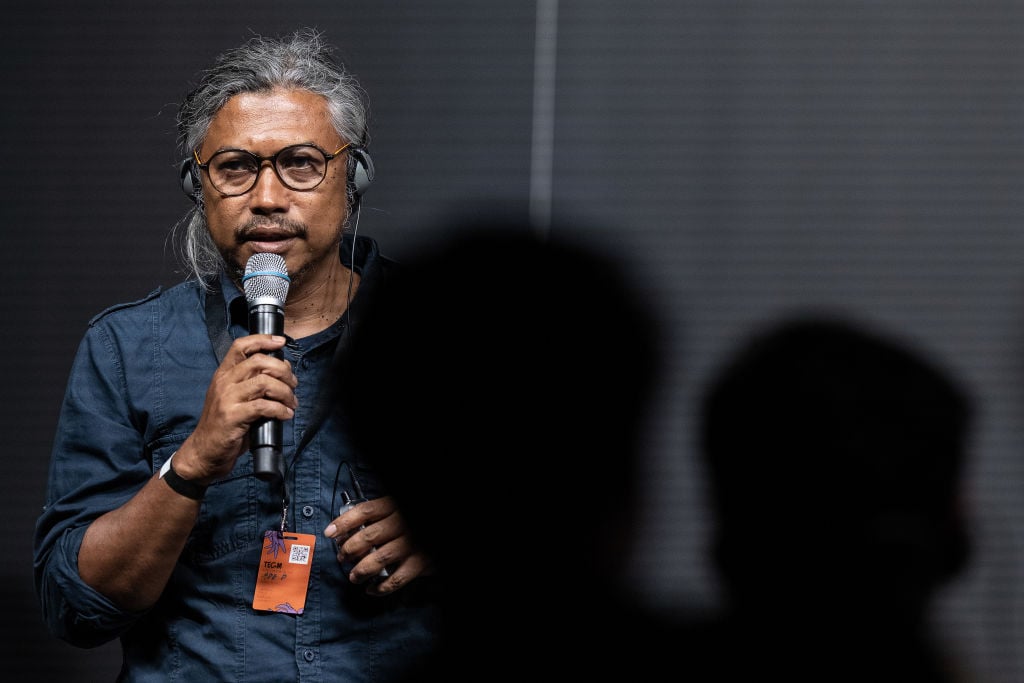
Ade Darmawan, spokesman for the curatorial collective Ruangrupa, speaks on the topic of “Anti-Semitism in Art” at a panel discussion organized by the Anne Frank Educational Center and the supporting organization documenta gGmbH. Photo by Swen Pförtner/picture alliance via Getty Images.
Can you speak about the experience of going to the Bundestag?
The invitation came for only one of us, and Ade Darmawan went as our representative. The invitation came for other members of the board as well.
Of course, none of us speak German properly, so there is always a translation barrier, [but] we decided to go because we knew it was not polite to say no to an invitation like this. We knew it would be read differently, and we are not hiding. We asked for time to prepare. We asked for translators, so everyone could speak their own language.
Many of us went with Ade to Berlin for moral support. Luckily, we did that because I wouldn’t be surprised if it had felt to him a bit like being on trial in a foreign country.
A controversy around another work in the show, Tokyo Reels Film Festival, is playing out as we are speaking. A Documenta panel convened to review the show recommended “immediate action” be taken over the video by the collective Subversive Film, which comprises clips of pro-Palestinian propaganda from the 1960s to 1980s. It was ultimately Taring Padi’s decision to remove their work, but this time, your tone changed—it seemed that you began to feel censored. Is that correct?
We could call the issue around Taring Padi censorship as well. But through talking to them, as you know from speaking with them, they felt that it was an oversight from their side. None of us played the blame game, and we absorbed the responsibility collectively; it is an oversight from our side as well. With everyone, including management, we discussed what could be done: covering it up first. Then, we heard from the different organizations, the board and the documenta und Museum Fridericianum gGmbH, that there was a request to take it down. Taring Padi complied—they did not want the issue to overshadow [the rest of the exhibition].
But it has been different after Taring Padi’s case. With Subversive Film, we talked about it as well, and we knew where we stood, and understood the content. Subversive Film has been writing about it, working with other scholars, and lawyers that have checked the work. In the case of Subversive Film, we did not feel that this was a situation of oversight.
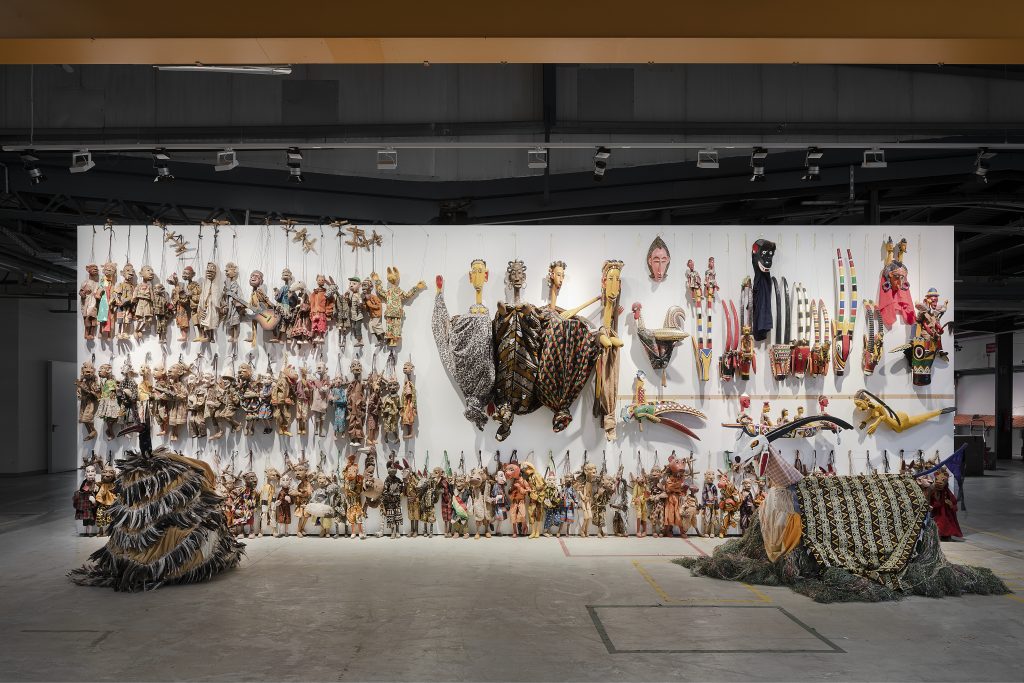
Documenta 15: Fondation Festival sur le Niger, Yaya Coulibaly, The Wall of Puppets, 2022, Installation view, Hübner Areal, Kassel. Photo: Maja Wirkus
Do you think that there was enough context for that work?
We felt that the work was not problematic. Contextualization is part of an artwork, and so the artist should give consent to what kind of contextualization is included.
People may agree and disagree on whether or not that work should be shown, but there is a connection between Subversive Film’s members and the Japanese Red Army. The Japanese Red Army undertook terrorist activities, including a 1972 bombing in Israel.
It is not part of the work of Tokyo Reels, which is by Masao Adachi, who did not have anything to do with that. The perpetrators of that incident may have met him but they had nothing to do with the choice of the reels that are shown. There is no connection between Tokyo Reels and the Japanese Red Army… Masao is not part of the making of those reels. Subversive Film understands the problems of a terrorist group, and I think they took care of it very carefully.
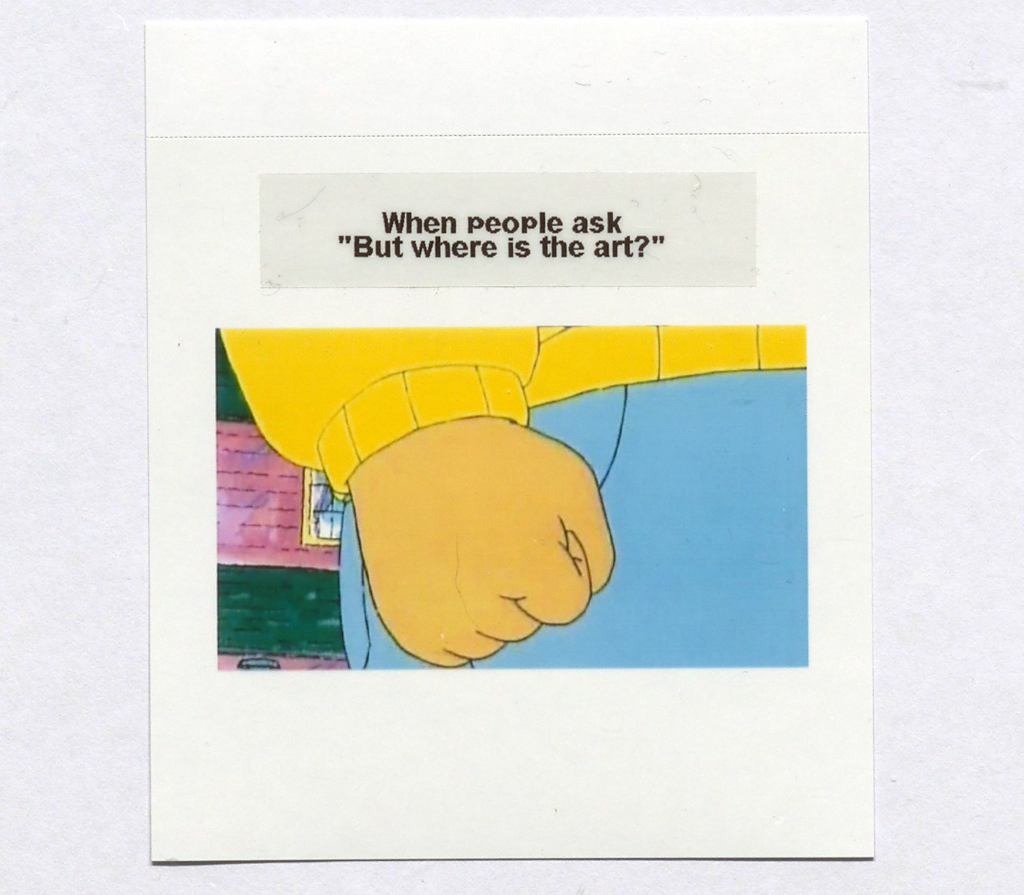
A postered version appeared around Kassel of a meme created by Cem A. artist and curatorial assistant for Documenta 15. Courtesy of Cem A. aka @freeze_magazine. Design in collaboration with Malte J. Richter.
You rejected, unofficially, a Western notion of an art market or so-called art-world star power. Then, funnily enough, one of the art world’s biggest stars, Hito Steyerl, ended up on the artist list. She later withdrew in July, saying she did not think Documenta 15’s organizers could “mediate and translate complexity,” referring to a “repeated refusal to facilitate a sustained and structurally anchored inclusive debate.” What was your reaction to that?
Hito came through INLAND [a collective selected by ruangrupa]. She decided and communicated directly to documenta und Museum Fridericianum gGmbH about her withdrawal. It was her right to withdraw. For us, that is totally fine, conceptually and ethically. What could be done better is the communication from her to INLAND and from INLAND to us. We found out about it from an article. That was regrettable.
I was recently in Munich at Lenbachhaus, which presented a show on the history of Documenta through acquisitions they had made. As I was walking through it, I wondered to myself how this Documenta is being acquired into museum collections. Has the museum world shown support, and are they interested? How will this Documenta be remembered in institutions?
I have heard about this from different sources, including Lumbung Gallery. The conversations have been happening and are exciting, because we can talk about the notion of collecting differently through nontraditional, time-based acquisition processes. Some museums are more warm to different forms of collecting than others—which is natural. My hope is that we manage to do it and show that acquiring artworks can be done differently and with commitments to the futures of different artistic practices.